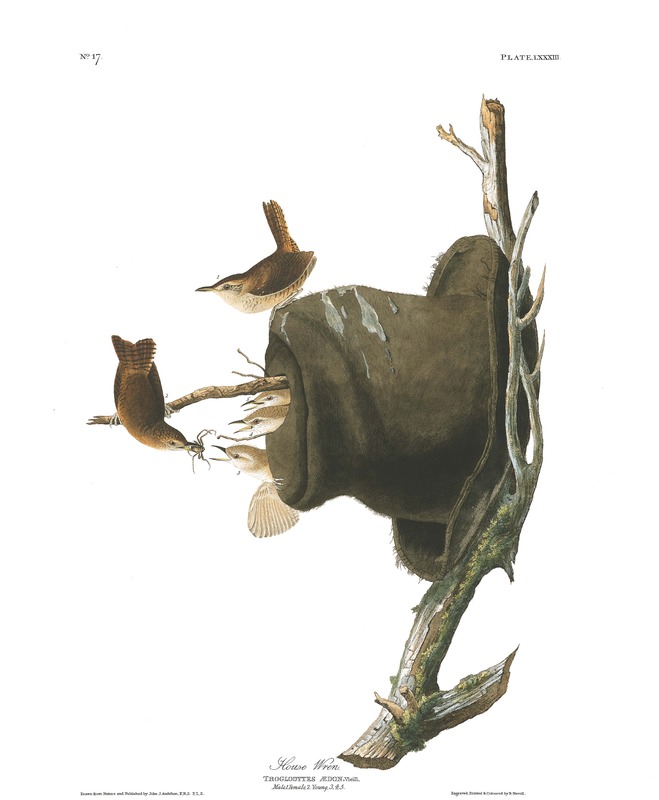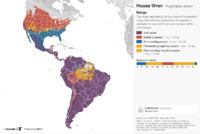Wrens
Birds in the Trogodytidae family are characterized by their slender, down curved beaks, short, rounded wings, and short tails. They are usually brown with brown, black, or white spots, streaks, or patterns. They are small and range in length between 3.5-8.5 inches. There are 90 species of birds in this family found in North and South America, typically in forests, fields, deserts, or marshes. They forage for insects and other invertebrates on the ground.
Included below are the Carolina Wren and the House Wren.
Carolina Wren
Thryothorus ludovicianus
Habitat: Tangles, undergrowth, suburbs, gardens, towns. Common in the undergrowth of deciduous or mixed woods, and in thickets along forest edges.
Preferred Food: Mostly insects. Sometimes catches and eats small lizards or tree frogs. Also eats berries and small fruits, especially in winter, and some seeds.
Fun Fact: Carolina Wrens sing a duet, with males singing the louder part and females give a chattering note.
House Wren
Troglodytes aedon
Habitat: Open woods, thickets, towns, gardens
Preferred Food: Mostly insects.
Fun Fact: House Wrens will destroy the eggs of birds of other species that have nests within or near their breeding area to protect their territory.



